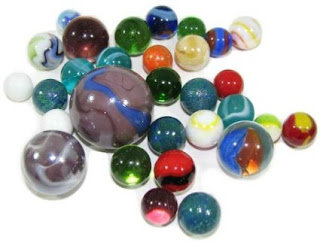I am trying to cherish each of these days right now--I know summer is ending soon. Our first day back as a faculty is August 29, and our first day is August 31. Not sure what my plan is for getting into my classroom and getting set up yet. I tend to enjoy getting in early and giving myself a couple weeks out of the room right before school begins, so I suppose if that's my plan I need to check in with our custodian to see if my room is done being cleaned!
Anyways, the reason I'm writing today is to share a very favorite, very fun, very SIMPLE set of materials you can use for a whole host of STEM challenges at a variety of grade levels--honestly, for grades K-4. Maybe even more than that. Crazy, I know!
Supplies
For starters, you need wooden blocks; the more, the merrier! I find that a variety of sizes is helpful. Sometimes you need large blocks to build up your structure, but small blocks are crucial for tight places and small tweaks! I asked for mine as a holiday gift for the classroom from my families last year in lieu of a gift for me; I received two sets, and could potentially have use for a third! I'll see how it goes this year, but I do sometimes borrow blocks from the Kindergartens in a pinch.Next up is hopefully a simple one: marbles! I had a set with both shooters and smaller marbles that I've had since I was a kid; having a variety of sizes is an AWESOME way to add an extra degree of difficulty when students need an extension because they've had success with the challenge. I also ordered the set below before I found my childhood collection, and was very happy with the quantity, variety, and price!
Last but not least, you'll need cove molding. This is wooden molding--the kind you usually affix to your doors, walls, or ceilings! This particular molding is a perfect track for marbles: it's flat on the back, has a perfect, even cove that acts like a track, is relatively inexpensive, and can be cut into different lengths. Best of all, it's pretty readily available and easy to find! I've found it at various different home improvement stores.
It's difficult to say how many pieces of this you'll need. For my class of 24 last year, I purchased eighteen 1' pieces, twelve 2' pieces, and six 3' pieces. I may end up supplementing with more 1' and 2' pieces this year, but since I usually have students work in 6 groups of 4 students, I made my numbers divisible by 6. This is totally up to you!
What In the World Do I Do With It?
Make ramps and pathways, of course! If you're teaching K or 1, you might begin really simply, with figuring out how to make a marble move down a ramp. You might then move to having students get the marble to roll a certain distance, or having students compare distances the marble rolls on different surfaces, or determining whether different size marbles roll different distances on the same ramp--the possibilities are endless! In each of these experiments is the possibility to discuss the properties of motion, friction, force, gravity, variables, the scientific method...the list goes on. Rich content with very little prep!If you're teaching 2-4, (or have K-1 students who are now familiar with these materials), you can have students use a specific set of materials (dictating number/size of blocks, number/size of ramps), have students connect more than one section of ramp, have students add a turn or a jump/chasm to their structure, layer ramps vertically, create a structure within a taped off area...again, so many possibilities! I do tend to have my students land their marble in a paper bag to avoid marbles flying everywhere, but again, you can also play with distance/friction as well. Students very quickly start understanding Newton's laws of motion without having any idea what high-level concepts they're accessing.
Show Me!
Here are some shots of my kiddos in action this year! We start by building and testing in our small groups...And then we share our progress and/or success with the group (we get our best ideas from each other, after all!)...
Here are some more complex structures from a later challenge--these have a jump/chasm!
Hope these images give you a sense of how much the kiddos love these materials and challenges, and hope they also inspire you to find a spot for these or other STEM materials in your classroom!
Happy Building!
- Lisa




































No comments